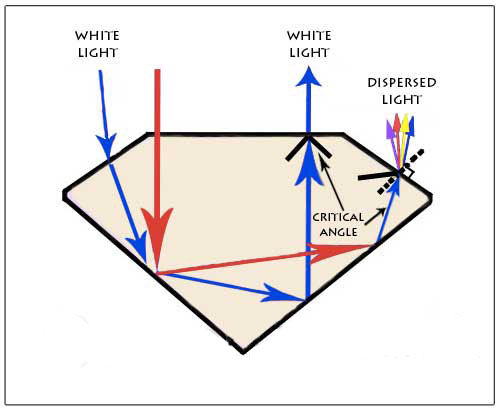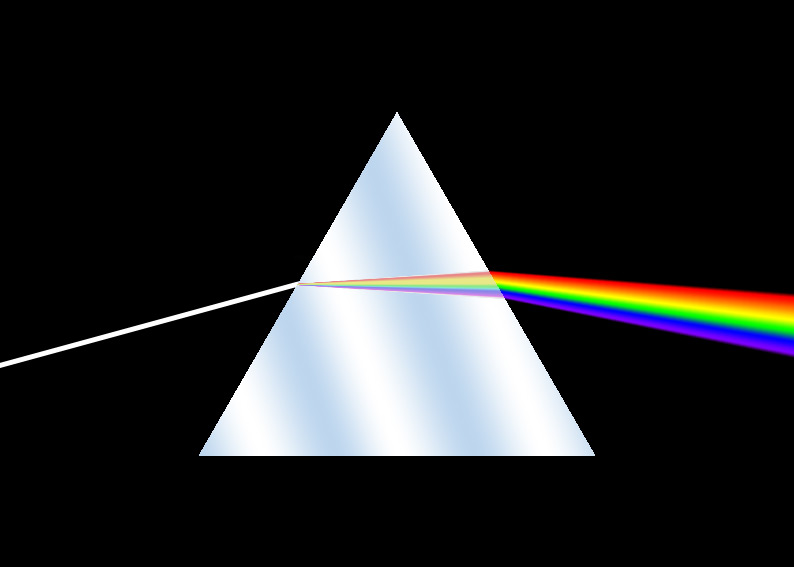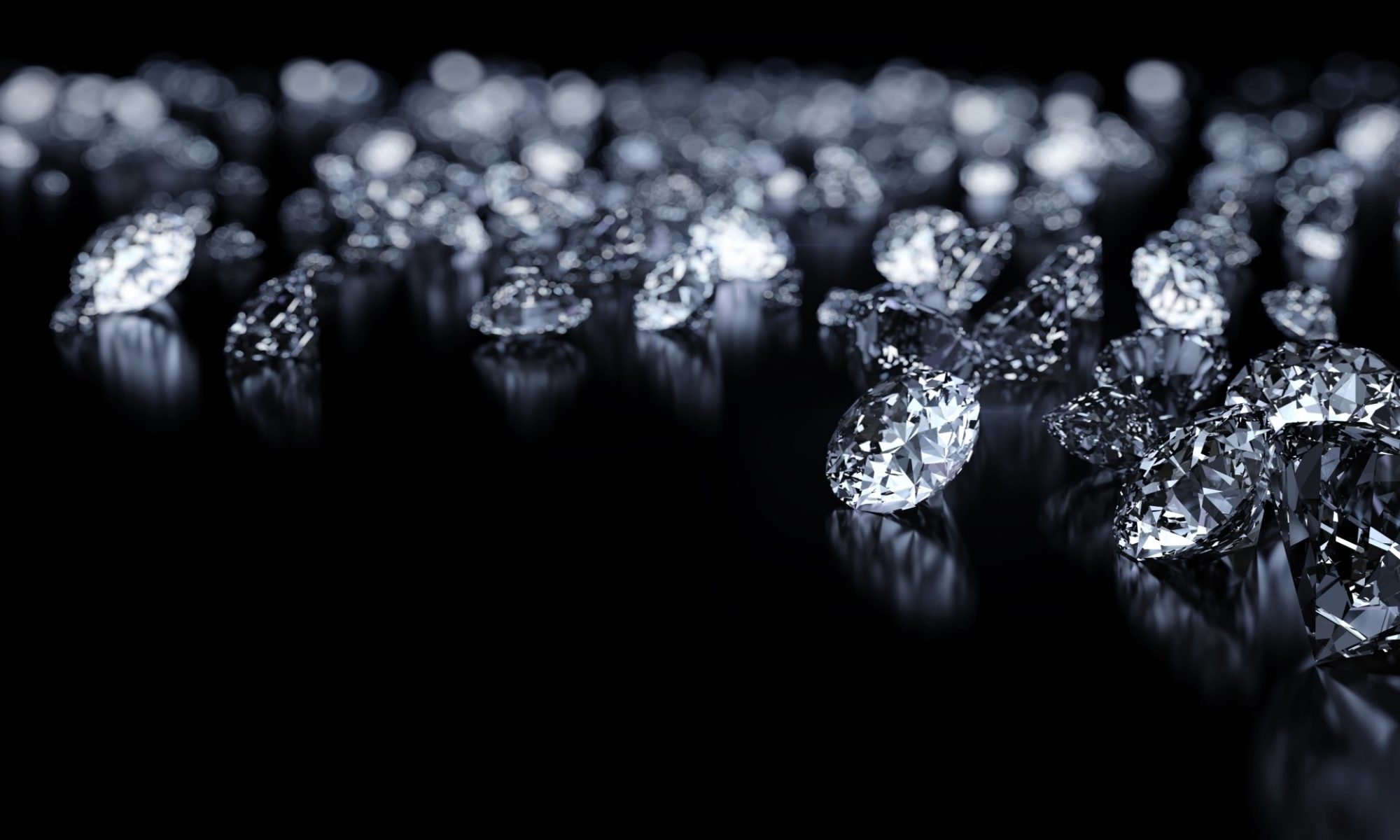Diamond Light Performance
Light performance refers to how a diamond handles light. A diamond can either return or leak light.

Let’s follow a ray of light (in blue) as it enters a diamond with ideal proportions through the crown. First it is slowed down and bent. Inside the diamond, the ray of light is totally reflected off two pavilion mains and comes out of the diamond through the table as white light.
If a diamond is cut too shallow or too steep, then instead of light returning from the top of the diamond, light will leak away from the bottom of the diamond. This is known as light-leakage.
Now let’s follow a ray of light (in red) that enters the diamond from the table. Again, the ray of light is totally reflected off two pavilion mains. As it leaves the diamond through the crown, the crown acts like a prism. When white light hits a prism, it is dispersed into the colors of the rainbow. That is why we see colorful flashes.

When you look at a diamond under diffuse lighting like indoor fluorescent lights, you will naturally see more white light returned from a diamond. A bright diamond is one that returns white light rather than having it leaked away. On the other hand, if you take the diamond and look at it under direct lighting like spot lights then you will see colored light, which is referred to as fire.
You may have heard that there is a trade-off between a diamond giving off more brightness or more fire. What is important to understand right now is that light leakage is detrimental to both brightness and fire.
If light leakage is bad, does that mean 100% light return is good? Well, a mirror is a device that returns 100% of the light shone on it, but we don’t pay thousands of dollars for mirrors or use them as jewelry. Our goal is therefore not maximising light return but ensuring that light is returned in a way that gives excellent depth and contrast, which gives a diamond its character.
When we talk about light performance, we are also referring to where the diamond returns light from. In real life, most often you will be looking at the diamond while it’s on your finger with lights behind or above you. Studies have identified that ideally the diamond should return light from between 45 and 75-degrees as measured from the plane of the girdle, being the region around your shoulders. Below 45-degrees and the diamond is likely to pick up other light sources or color, and above 75-degrees is where the diamond will pick up the shadow of your head.
Conclusion
Choosing a diamond with good light return is important, but it is equally important to ensure that most of the light being returned is from around your shoulders and not your head or the horizon. When optimising for light performance, our aim is to minimize unwanted light leakage in a diamond. However, light performance is not about 100% light return, but about enhancing the beauty of a diamond in terms of its depth and contrast pattern.
